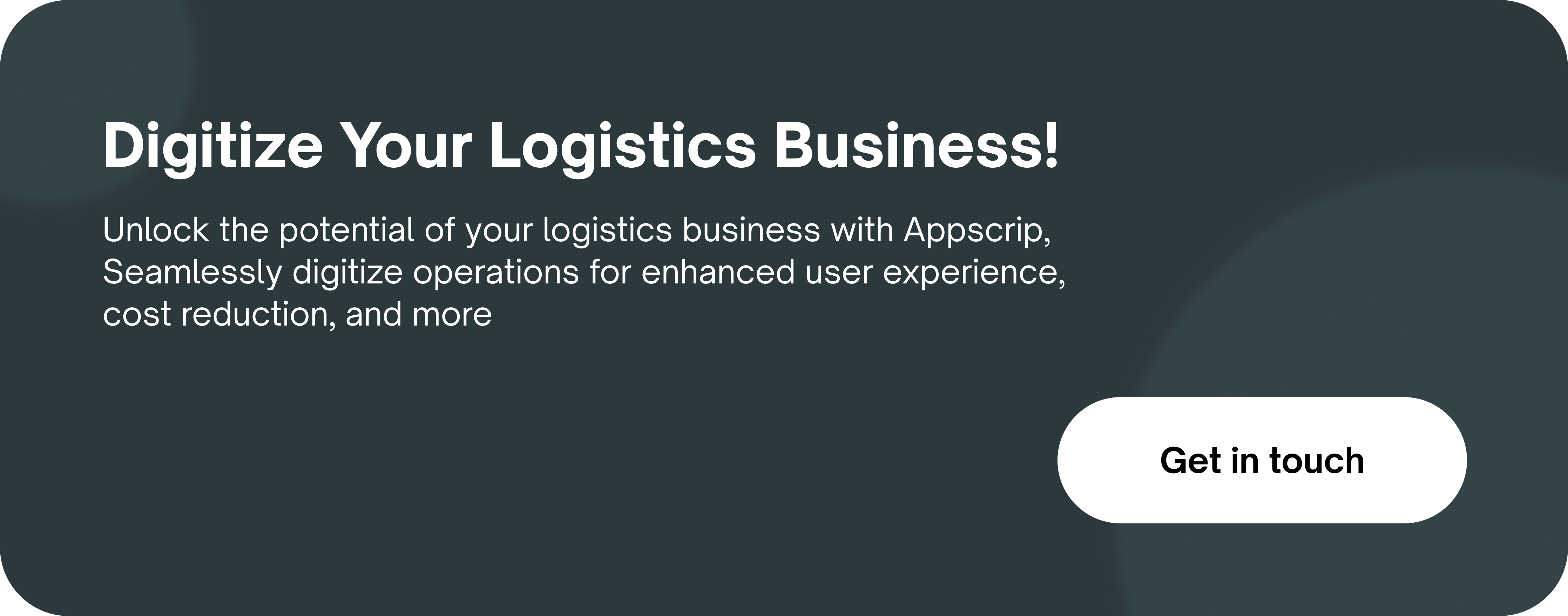In today’s rapidly evolving business landscape, supply chain optimisation has gained crucial strategic focus as organisations aim to enhance efficiency and reduce costs. This blog will delve into the concept of supply chain optimisation, emphasising the pivotal role that logistics plays in supply chain management.
Furthermore, we’ll introduce the idea of leveraging logistics mobile apps as a powerful tool for achieving optimisation, defining its objectives, and illustrating how it can significantly impact efficiency and save costs.
The concept of supply chain optimisation
Supply chain optimisation involves fine-tuning the various processes and components within a supply chain to achieve the highest level of efficiency, responsiveness, and cost-effectiveness.
The goal is to streamline operations, reduce waste, and enhance overall performance from the initial supplier to the end customer.
Importance of logistics in supply chain management
Logistics is the backbone of supply chain management. It encompasses the planning, implementation, and control of the efficient flow and storage of goods, services, and information from point of origin to point of consumption.
Effective logistics ensures that products reach the right place at the right time while minimising costs.
Idea of using a logistics app for optimisation
In today’s digital era, logistics mobile apps have emerged as indispensable tools for optimising supply chains. These apps provide real-time visibility, data analytics, and automation capabilities that enable businesses to make informed decisions, reduce lead times, and enhance overall supply chain performance.
What is Supply Chain Optimisation and its objectives?
Supply chain optimisation aims to achieve several key objectives, including minimising inventory carrying costs, reducing transportation expenses, improving customer service levels, and increasing overall supply chain agility.
Supply chain optimisation seeks to align supply chain activities with business goals and market demands of a larger level.
How optimisation impacts efficiency and cost savings
Optimising the supply chain leads to improved efficiency by reducing delays, minimising bottlenecks, and enhancing resource allocation.
This increased efficiency directly translates into cost savings through reduced inventory holding costs, transportation expenses, and labour costs.
Challenges in Supply Chain Management
Supply chain management faces various challenges, such as demand volatility, supplier disruptions, and complex global networks. These challenges can lead to increased operational costs and decreased customer satisfaction.
Technological solutions to address challenges
To address these challenges effectively, businesses need advanced technology solutions.
Traditional supply chain management methods often struggle to keep up with the demands of modern, global supply chains, making technology solutions, like logistics apps, increasingly essential.
Define logistics apps and their key functions
Logistics apps are software applications designed to streamline supply chain operations. They offer features such as real-time tracking, inventory management, route optimisation, and data analytics.
These functions empower organisations to make data-driven decisions and respond rapidly to changing conditions.
How Logistics apps differ from traditional supply chain management
Logistics apps differ from traditional methods by providing real-time visibility, automation, and data-driven insights. They replace manual processes with digital solutions, reducing errors, and enabling a more proactive management of the supply chain.
Advantages of incorporating logistics apps into your supply chain
* Enhanced Visibility: Logistics apps provide real-time tracking and monitoring of shipments, enabling better visibility across the supply chain.
* Cost Reduction: By streamlining processes and reducing manual errors, logistics apps help cut operational costs.
* Improved Efficiency: Automation and analytics in these apps streamline operations, leading to increased efficiency.
* Better Decision-Making: Data-driven insights from logistics apps aid in making informed decisions.
Features to Look for in a Logistics App
- Real-time Tracking
This feature allows users to monitor the exact location and status of their shipments or vehicles in real-time. It provides up-to-the-minute information on where goods are in the supply chain, helping improve transparency, customer satisfaction.
- Route Optimisation
Route optimisation helps determine the most efficient path for deliveries or shipments. It considers factors such as traffic conditions, delivery schedules, vehicle capacity, and delivery priorities to minimize costs and delivery time.
- Inventory Management
Inventory management involves keeping track of available goods, stock levels, and warehouse storage. It helps optimise inventory levels, reduce carrying costs, prevent stockouts or overstock situations, and ensures availability of goods.
- Analytics and Reporting
This involves collecting and analysing data to gain insights into performance, cost analysis, and trends. Reports and analytics can help make informed decisions, identify areas for improvement, and enhance overall efficiency.
- Carrier Management
Carrier management allows logistics companies to efficiently manage their relationships with transportation providers and carriers through rate negotiation, contract management, performance monitoring, and ensuring compliance with service agreements.
- Secure Data Handling
Secure data handling is crucial for protecting sensitive information and involves implementing robust security measures to safeguard data related to shipments, inventory, customer information, and financial transactions.
It ensures that data is encrypted, access is restricted, and compliance with data protection regulations is maintained.
Essential features for supply chain optimisation
- Demand Forecasting
- Vendor Management
- Order Fulfilment Automation
- Warehouse Management
- Demand-Driven Inventory Control
How these features contribute to efficiency
- Demand forecasting reduces overstocking or understocking.
- Automated order fulfilment reduces order processing time.
- Real-time inventory management ensures optimal stock levels.
- Warehouse management streamlines storage and retrieval.
Importance of customisation and integration capabilities
- Customisation tailors the app to your unique supply chain needs.
- Integration with existing systems ensure seamless flow of data.
- Both contribute to a cohesive and efficient supply chain ecosystem.
How these features can align the app with your specific supply chain needs
- Customisation aligns the app with specific industry requirements.
- Integration ensures compatibility with existing software and hardware.
Steps to Implementing a Logistics App
Step-by-step guide on how to integrate a logistics app into your supply chain.
- Assess Your Needs
- Choose the Right App
- Plan Integration
- Data Migration
- Testing
- Training
- Go Live
Real-World Success Stories
Companies that have benefited from logistics app implementation.
- Amazon
- Walmart
- UPS
- FedEx
- Alibaba
Future Trends in Logistics Apps
- IoT and Sensor Integration
- Blockchain for Transparency
- Artificial Intelligence for Predictive Analytics
- Autonomous Vehicles and Drones
- Sustainability Initiatives
Emerging Technologies
Technologies and trends in logistics app development
- Emphasis on Sustainability
- Hyper-Automation
- 5G and Edge Computing
- AI-Driven Predictive Maintenance
- Collaboration Platforms
Innovations that can shape the future of supply chain optimisation
- Reduced environmental impact through sustainability initiatives.
- Enhanced automation for streamlined operations.
- Faster and more accurate decision-making.
- Improved collaboration across supply chain partners.
- Greater adaptability to changing market conditions.
Conclusion
In here we have explored the benefits of using logistics apps, essential features to look for, their role in supply chain optimisation, customisation and integration capabilities, a step-by-step integration guide, companies that have reaped the benefits, and future trends shaping logistics app development and supply chain optimisation.
In today’s fast-paced business landscape, staying competitive requires efficient supply chain management. One effective way to achieve this is by incorporating logistics mobile apps into your operations.

After an Engineering degree and a Diploma in Management I devoted 16+ years working in the automotive industry. My innate skill and extreme passion in writing, encouraged me to adopt it up as a profession. I have been writing for more than 10+ years in the software industry. The 400+ blogs I published are informative, exhaustive and interesting to a professional and causal reader.










